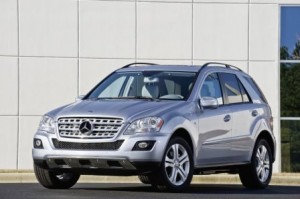
A new study finds that with the increased use of anti-rollover technology SUVs now have a lower death rate than comparable passenger cars.
Your odds of dying or being seriously injured in the crash of an SUV – especially a rollover accident – has dropped sharply in recent years, according to a new report by an insurance industry trade group that gives much of the credit to the electronic stability control systems that are now becoming standard equipment.
While many motorists tend to view big sport-utility vehicles as a safe option because they sit higher, offer broader visibility over traffic – and have plenty of sheet metal surrounding the passenger compartment – utes have traditionally had higher death rates than comparably-sized sedans and coupes. The big problem has been rollovers, which are far more common in truck-based vehicles, and which are responsible for a significant share of SUV deaths and injuries.
But the situation has reversed itself now that a large and growing number of sport-utility vehicles come equipped with electronic stability control, a technology designed to help maintain control in poor driving conditions or when a driver makes an error like over-accelerating into a corner. Most of the digitially controlled ESC systems used in trucks add software to minimize the risk of rollovers.
“The rollover risk in SUVs used to outweigh their size/weight advantage, but that’s no longer the case,” thanks to electronic stability control, or ESC, said Anne McCartt, the senior vice president for research at the Insurance Institute for Highway Safety. “Pound for pound, SUVs have lower death rates.”
A new IIHS report issued today examined driver fatality rates for 2006 through 2009 cars and light trucks and found that fatalities totaled 56 per million registered vehicle years in passenger cars, but just 28 in SUVs. For other light trucks the death rate was 52 per million.
In a previous IIHS study of 2002 through 2005 vehicles, SUVs had higher death rates than passenger cars in all but one weight class. The insurance industry trade group cautions “it’s impossible to do an apples-to-apples comparison” of the new and earlier figures because the latest study has been tweaked to reflect other factors, such as driver age and gender. But IIHS researchers still believe the trend is clear and significant.
Safety experts have been pressing for the expanded use of brake-based safety equipment ever since anti-lock brake systems, or ABS, came into initial use in the 1980s. Since then, the technology has progressed rapidly, improving a vehicle’s ability to not just stop and maintain control on slick surfaces, but helping steer through corners when driving too fast and preventing rollovers.
Starting with the 2012 model-year, all passenger cars and light trucks sold in the U.S. will be required to come with standard ESC. But most manufacturers have accelerated that roll-out, the IIHS noted, with the technology already offered on 96% of SUVs, 65% of passenger cars and 11% of pickups by 2008.
The federal government has estimated the addition of the technology would cost an average $479 per vehicle – but just $111 on products that were already equipped with the less sophisticated ABS.
By a variety of measurements, the new technology appears to be working. U.S. highway deaths last year fell 3%, to 32,788, their lowest level since 1949. Though the National Highway Traffic Safety Administration has predicted ESC could reduce rollover accidents by as much as 84%, it’s difficult to be sure just how much of an impact that has actually had on overall fatalities, but by 2009, the number of reported rollover accidents drop to 8,300 after long averaging well over 10,000 annually.
The impact of new technology can’t overcome the fact that driver behavior can vary widely according to factors such as age, gender – and the type of vehicle a motorist is driving.
The only class of vehicle with a lower death rate than the SUV in the latest study was the minivan, at 25 deaths per million registered vehicle years – and that is largely believed to reflect the more cautious nature of those driving the so-called people carriers, which are frequently used to haul children.
While SUV death rates in the latest study were lower than comparable passenger cars in all weight classes, the absolute lowest fatality figures were claimed by the Honda Accord, at just 19 per million. On the other hand, the 2007 Chevrolet Malibu had the highest death rate, at 99, with the figure falling to 67 when the midsize Chevy model was redesigned in 2008.
The IIHS considers stability control so important it is a requirement for a vehicle to win the group’s sought-after Top Safety Pick. But researchers caution that not all ESC systems are the same, some working aggressively, some “weak.”
While there are concerns about which do a better job – and efforts are underway to improve the technology, IIHS Chief Research Officer David Zuby stressed that the critical factor is that, in terms of accidents prevented, lives saved, injuries reduced and medical costs lowered, “We know ESC is paying dividends as expected.”
